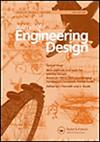活动时间限制对形式创造手势启发的影响
IF 3.4
2区 工程技术
Q1 ENGINEERING, MULTIDISCIPLINARY
引用次数: 0
摘要
在设计过程中使用的认知加工包括时间关键型和耗时型思维。对于基于手势的界面,将设计生成或修改的速度与设计师的思维过程相匹配的能力对于表单创建尤其重要,特别是在输入和响应的表示模式可能影响所执行活动的选择的情况下。特别是在手势启发研究中,耗时的设计活动可以将焦点转移到形成手头问题与先前知识和经验之间的类比,而不是直观的手势建议,这将是最适合给定的表示模式。然而,设计方法并不规定或讨论时间限制及其在这种情况下的使用。本文通过对有时间限制和无时间限制的两个研究部分的比较,探讨了三维物体创建、修改和操作的手势启发研究中的时间限制。这两个部分的手势持续时间具有可比性,并且引出的手势在性质上相似,并且使用相同的手部运动元素,这支持了当手势用于与3D物体交互并且表示和交互方式匹配时,时间限制可能是一种有用的方法方法的假设。本文章由计算机程序翻译,如有差异,请以英文原文为准。
Effects of activity time limitation on gesture elicitation for form creation
Cognitive processing employed during design includes both time critical and time-consuming types of thinking. The ability to match the pace of design generation or modification with the designers thinking processes can be particularly important with gesture-based interfaces for form creation, especially where representation modes of input and response may influence the choice of activities performed. Particularly in gesture elicitation studies, time-consuming design activities can shift the focus on forming the analogies between problem at hand and prior knowledge and experiences, rather than intuitive gesture suggestions that would be the best fit for the given representation mode. However, design methodologies do not prescribe or discuss time limitations and their use in this context. In this paper, time limitation is explored during a gesture elicitation study for three-dimensional object creation, modification and manipulation, by comparing two study parts, one where time limitation was imposed and one where time was unlimited. Resulting gesture durations in both parts were comparable and elicited gestures were similar in nature and employing same elements of hand motion, supporting the hypothesis that time limitation can be a useful methodological approach when gestures are used for interaction with 3D objects and representation and interaction modalities are matched.
求助全文
通过发布文献求助,成功后即可免费获取论文全文。
去求助
来源期刊

Journal of Engineering Design
工程技术-工程:综合
CiteScore
5.00
自引率
33.30%
发文量
18
审稿时长
4.5 months
期刊介绍:
The Journal of Engineering Design is a leading international publication that provides an essential forum for dialogue on important issues across all disciplines and aspects of the design of engineered products and systems. The Journal publishes pioneering, contemporary, best industrial practice as well as authoritative research, studies and review papers on the underlying principles of design, its management, practice, techniques and methodologies, rather than specific domain applications.
We welcome papers that examine the following topics:
Engineering design aesthetics, style and form-
Big data analytics in engineering design-
Collaborative design in engineering-
Engineering concept design-
Creativity and innovation in engineering-
Engineering design architectures-
Design costing in engineering
Design education and pedagogy in engineering-
Engineering design for X, e.g. manufacturability, assembly, environment, sustainability-
Engineering design management-
Design risk and uncertainty in engineering-
Engineering design theory and methodology-
Designing product platforms, modularity and reuse in engineering-
Emotive design, e.g. Kansei engineering-
Ergonomics, styling and the design process-
Evolutionary design activity in engineering (product improvement & refinement)-
Global and distributed engineering design-
Inclusive design and assistive engineering technology-
Engineering industrial design and total design-
Integrated engineering design development-
Knowledge and information management in engineering-
Engineering maintainability, sustainability, safety and standards-
Multi, inter and trans disciplinary engineering design-
New engineering product design and development-
Engineering product introduction process[...]
 求助内容:
求助内容: 应助结果提醒方式:
应助结果提醒方式:


